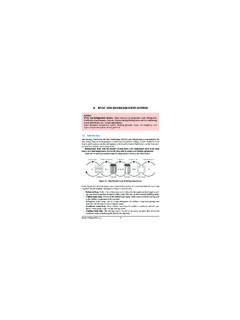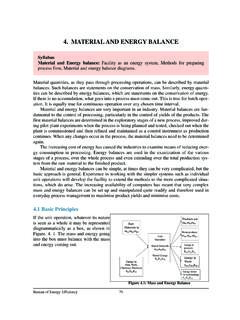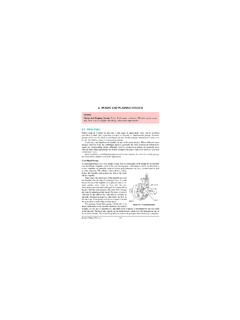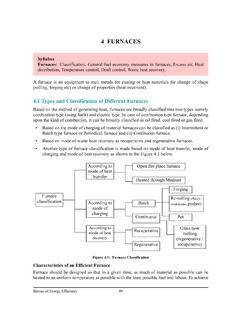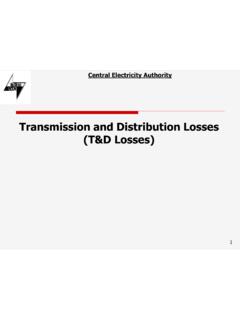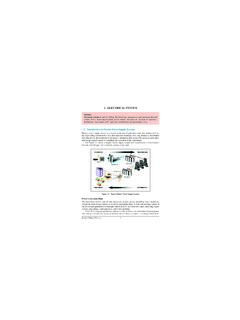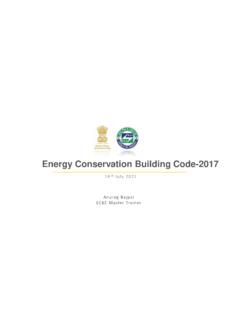Transcription of Energy Conservation Building Code FAQs
1 Energy Conservation Building code faqs ECBC. 2017. What is ECBC? A. The Energy Conservation Building code (ECBC) was launched in May 2007 by the Bureau of Energy Efficiency (BEE), Ministry of Power. Its main objective is to establish minimum requirements for Energy efficient design and construction of buildings. Recognizing the Energy and cost savings of efficient buildings and to help address growing Energy needs, the state of Uttar Pradesh is the process to notify ECBC code . Why is ECBC important? A. India's two thirds of the total Building stock that will exist in 2030 are yet to be built.
2 New buildings possess a great challenge to meeting its increasing Energy demand. ECBC sets minimum Energy efficiency levels for commercial buildings, locking in Energy savings for years to come, retaining occupant comfort, while combating climate change. Is ECBC applicable to all type of buildings? A. The ECBC is applicable to all buildings or Building complexes that have a connected load of 100 kW or greater, or a contract demand of 120 kVA or greater and used for commercial purposes. It is applicable for both Government and private buildings.
3 The code is not applicable to Equipment and portions of Building systems that use Energy primarily for manufacturing processes. What are the different Building classification under ECBC? Energy Conservation Building code faqs ECBC. 2017. What are the different compliance approaches to meet ECBC compliance? A. there are three compliance approach to meet ECBC compliance: PRESCRIPTIVE Approach Flexibility: LOW. Expert Knowledge: LOW. Requires little Energy expertise, provides minimum performance requirements, no flexibility Building TRADE OFF Approach Flexibility: MEDIUM.
4 Expert Knowledge: MEDIUM. Allows some flexibility through the balance of some high-efficiency components with other lower efficiency components WHOLE Building PERFORMANCE Approach Flexibility: HIGH. Expert Knowledge: HIGH. Allows flexibility in meeting or exceeding Energy efficiency requirements (as compared to a baseline Building What are the mandatory code requirements? A. Irrespective of whether one opts for Whole Building Performance (WBP) method or Prescriptive method, the code compliance requires the Building to fulfill a set of mandatory provisions.)
5 The mandatory requirements are described in CGECBC under sections , , , and of the CGECBC code . Does water Conservation come under the scope of ECBC? A. No, ECBC addresses only Energy efficiency of buildings. Water and other aspects are generally covered in green Building rating systems. If there are additions or alterations to the existing buildings (Retrofits and Refurbishments), how should they comply to the code ? Compliance may be demonstrated in either of the following ways: A. The addition shall comply with the applicable requirements, or The addition, together with the entire existing Building , shall comply with the requirements of this code that shall apply to the entire Building , as if it were a new Building Exceptions are when space conditioning is provided by existing systems and equipment, the existing systems and equipment need not comply with this code .
6 However, any new equipment installed must comply with specific requirements applicable to that equipment. Energy Conservation Building code faqs ECBC. 2017. What is the difference between a standard Building and a proposed Building ? A. Proposed Building is consistent with the actual design of the Building and complies with all the mandatory requirements of ECBC. Standard Building is a standardized Building that has the same Building floor area, gross wall area and gross roof area as the Proposed Building , complies with the mandatory requirements , , , and , and minimally complies with prescriptive requirements of , , and for ECBC.
7 Buildings. What is EPI of a Building ? A. The EPI of a Building stands for Energy Performance Index and is given as: What is EPI ratio? EPI ratio is the ratio of the EPI of the proposed Building to the EPI of the standard Building Is it necessary to show ECBC compliance through simulation software? A. A Building following the whole Building performance approach shall show compliance through a whole Building Energy simulation software that has been approved by BEE. Is it mandatory to use daylighting in my Building in order to show ECBC compliance?
8 A. Above grade floor areas shall meet or exceed the Useful Daylight Illuminance (UDI) area requirements listed in Table 4-1 for 90% of the potential day lit time in a year. Mixed-use buildings shall show compliance as per the criteria prescribed How do I show ECBC compliance for Daylighting? A. Compliance shall be demonstrated either through daylighting simulation method or the manual method. Energy Conservation Building code faqs ECBC. 2017. What is Total System Efficiency methods indicate? A. For projects using central chilled water plants, the Total System Efficiency approach may be used to comply with the Prescriptive Method of 5.
9 This approach may be used in place of the prescriptive criteria of chillers ( ), chilled water pumps ( ), condenser water pumps ( ), and cooling tower fan ( ). Per this approach, a Building complies if the Total System Efficiency thresholds are met as per Table 5-23 Maximum System Efficiency Threshold for ECBC, ECBC+, and SuperECBC Buildings. What is U-value? A. A U value is a measure of heat loss. It is expressed in W/m2k, and shows the amount of heat lost in watts (W) per square meter of material (for example wall, roof, floor etc.) when the temperature (k) outside is at least one degree lower.
10 The lower the U-value, the better the insulation provided by the material. Is it essential to install solar water heater system to meet hot water requirement of buildings? A. As per ECBC, commercial establishments such as hotels, hospitals, guest houses with a centralized system shall have either solar water heating or waste heat recovery system up-to the criteria given in the above section. Where can I find construction material properties? A. The user can find construction material properties from suppliers and test certificates. If they are not available with manufacture/vendor/supplier you can refer appendix of the ECBC for default values.
